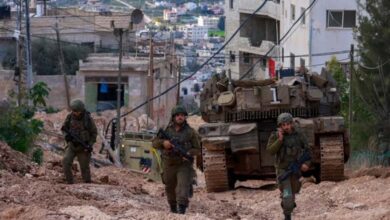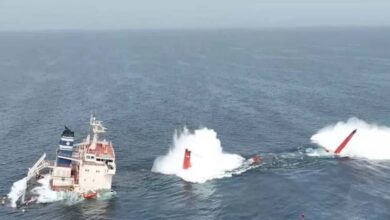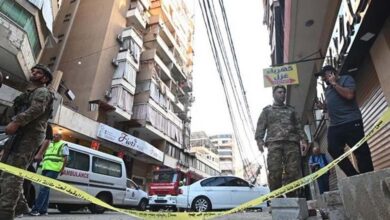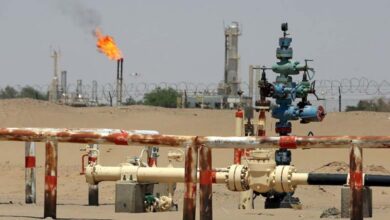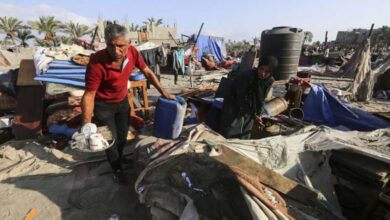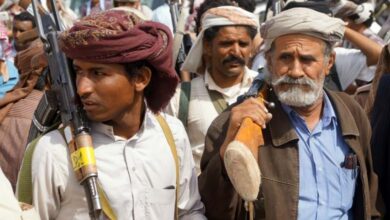Can Gaza Overcome Hamas’s Heavy Legacy and the Long Shadow of Occupation?

Diplomatic efforts to establish a ceasefire in the besieged Gaza Strip are faltering, while Israeli military operations are accelerating on the ground.
This scenario indicates shifts that go beyond the current confrontation, aiming to redraw the maps of control and influence.
-
Latest News from Gaza: Hamas Offers to Release All Hostages under Two Conditions
-
More than Half of Gaza under Netanyahu’s Control… Morag Encircles Rafah to ‘Strangle’ Hamas
This is the perspective of Ahmed Fouad Al-Khatib, a Palestinian-American peace activist leading the “Realignment for Palestine” project at the Atlantic Council. In an interview with Foreign Policy, he discusses the current humanitarian situation in Gaza, recent protests against Hamas, and his expectations regarding the war’s trajectory.
Al-Khatib, who spent most of his childhood in Gaza, lost 33 family members during Israeli bombings of the territory.
-
Hamas Keeps New Leadership Secret Amid Assassination Fears
-
New Complication in Gaza Negotiations: Hamas Rejects Israel’s Latest Offer
Nearly a month after the first phase of the ceasefire agreement between Israel and Hamas ended without progress toward a second phase, Israel resumed its air and ground attacks on Gaza, intensifying the blockade and severely restricting the entry of humanitarian aid.
In this context, Israel recently proposed a new ceasefire that includes the disarmament of Hamas. The movement rejected this proposal, later expressing its willingness to release all hostages in exchange for ending the war and freeing Palestinian prisoners.
Meanwhile, Israeli Defense Minister Yisrael Katz announced that Israeli forces would remain “indefinitely” in what Israel considers “security zones” within Gaza.
-
Hamas Hezbollah and Houthis: Netanyahu Unveils His Vision to End the Gaza War
-
Fatah Calls on Hamas to Leave the Government Scene: Have Mercy on Gaza and Its Children
Towards a Reoccupation of Gaza?
In Foreign Policy, Ahmed Al-Khatib believes that Israel is effectively moving toward reoccupying Gaza, under the pretext of neutralizing the security threat. He fears this could be the final blow to any hope of reviving the Palestinian national project.
He states: “I met with some members of Bezalel Smotrich’s party (the far-right Israeli Finance Minister) and shared my ideas about stabilizing Gaza. They were adamant about reoccupying it.”
-
Military pressures push Hamas to maintain negotiation options
-
Hamas Responds to New Proposal and Agrees to Release an Israeli-American Hostage
He adds: “In the first part of the conversation, they talked about Gaza losing half its land and annexing it to Israel to show Palestinians the consequences. Then they mentioned establishing settlements in northern Gaza.”
According to them, northern Gaza is where much of Hamas’s deadly presence is concentrated, so they need to build settlements there.
Al-Khatib not only wants to rebuild Gaza but to “revive” it as a prosperous, independent entity. However, he fears that “Israeli occupation could undermine this dream and even prolong Hamas’s presence, which might find in the new situation a pretext to continue existing.”
-
A 10-Year Truce and Disarmament… Details of the Secret Talks between the U.S. and Hamas
-
Hamas Preempts Witkoff’s Participation in Doha Negotiations by Reinforcing Its Positions
An Uprising Against Hamas
Al-Khatib also highlights the recent protests against Hamas within Gaza, describing them as “a rare point of light,” but notes they were largely ignored by some Western pro-Palestinian factions, arguing that their timing doesn’t align with the prevailing narrative.
He asserts: “The people of Gaza are completely against Hamas, its terrorism, and the squandering of their lives and resources. They oppose the suicidal nihilism, death worship, and Nazi fascism that Hamas embodies, which have destroyed the Palestinian national project.”



